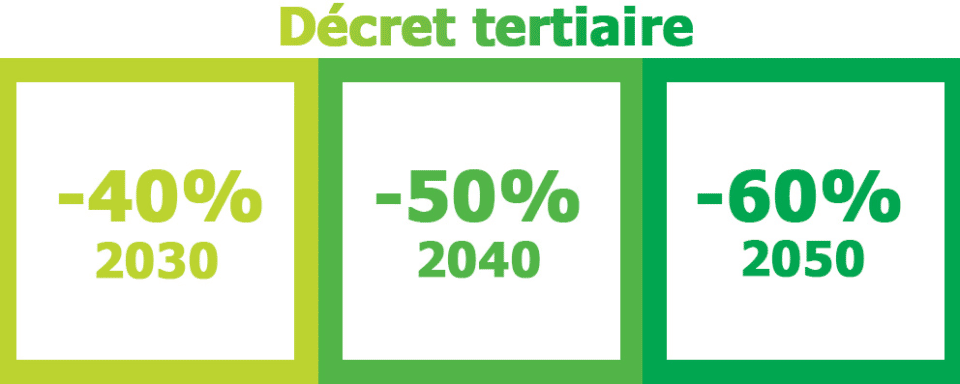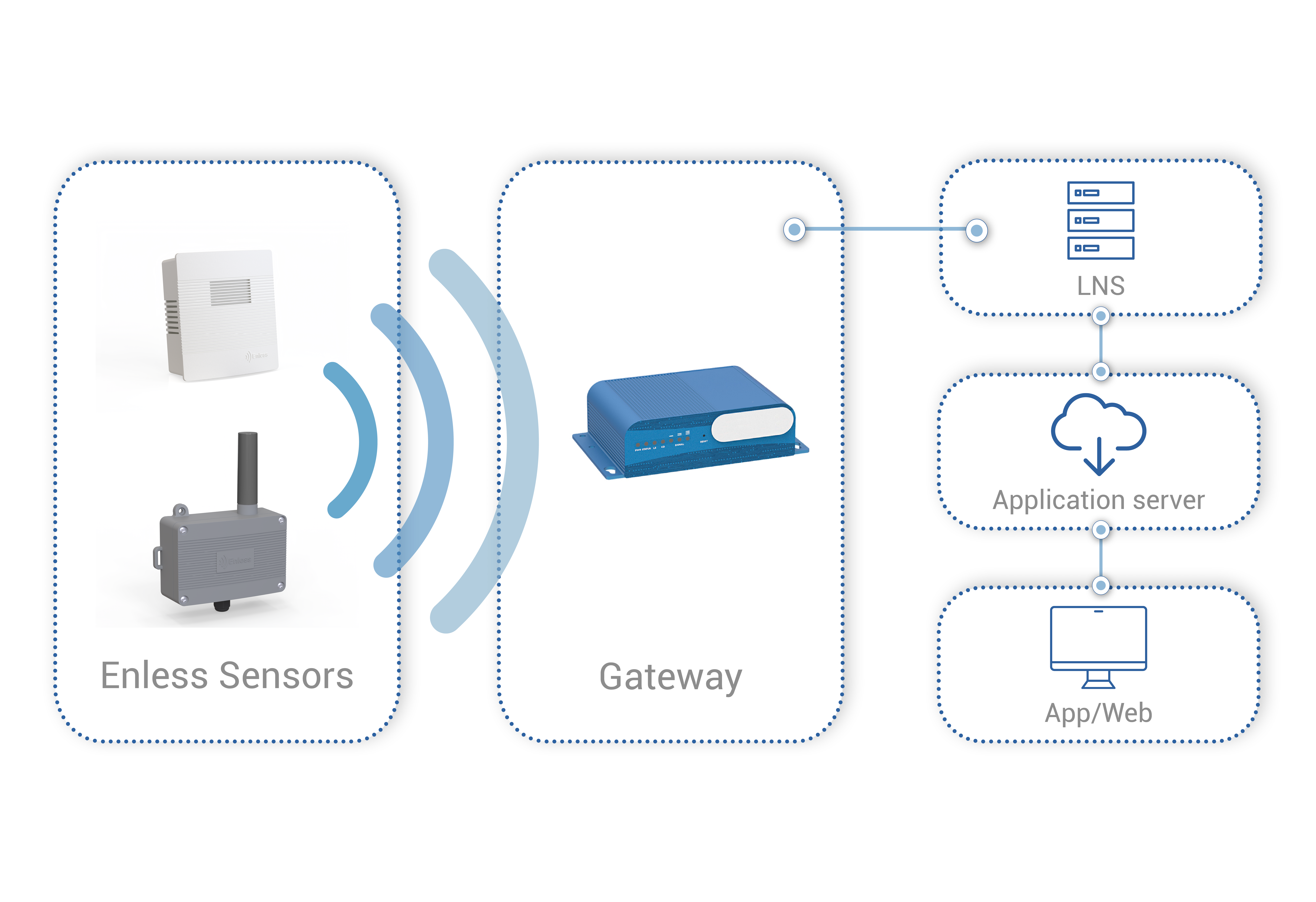Energy efficiency is a key part of sustainable development. The Décret Tertiaire (tertiary sector decree) in France is a guiding component towards reaching this objective. But what is the Décret Tertiaire and how will it help reduce energy consumption?

Definition and aim of the Décret Tertiaire
The Décret Tertiaire is a legal text outlining essential measures for reducing energy consumption in tertiary sector buildings. For this purpose, a tertiary sector building is a building or structure in which tertiary sector activities take place.
With buildings accounting for 43% of energy consumption in France, the significance of this Decree is evident in terms of its contribution towards reducing the impact of their energy use. Having said this, we need to start by focussing on this major consumer of energy.
The objective of the Décret Tertiaire is to reduce energy consumption in three stages:
- A 40% reduction by 2030;
- A further 50% reduction by 2040;
- A final 60% reduction by 2050.
It proposes various actions to ensure its targets are achieved. These cover aspects such the transformation of energy use in tertiary buildings, updating their systems and equipment. These actions will enable them to increase their energy efficiency and thus significantly reduce their levels of energy consumption.
Scope of application of the Décret Tertiaire
This Decree specifically relates to buildings that fall into one of the following three categories:
- A tertiary activity located within a building with a surface area equal to or greater than 1,000 m²;
- A tertiary sector building with a surface area equal to or greater than 1,000 m²;
- Tertiary sector buildings of less than 1,000 m² located on a single site, with a total combined surface area equal to or greater than 1,000 m².
This means that the Décret Tertiaire is applicable to both property owners and tenants. Thus, whilst specific areas of responsibility vary, all parties have responsibilities under the Decree. A failure to comply with the Decree can be penalised with fines of 7,500 euros per establishment and the inclusion of the offender in a “Name & Shame” section on a Government website.
Examples of actions to take
The desire to reduce energy consumption is a good thing. But how can we actually do this?
First of all, it is matter of radically raising awareness among the occupants or staff to produce behaviour change. This means acquiring more energy efficient ways of doing things and thus achieving changes in habits and ways of thinking would be a very good starting point.
Next, changes need to be made to the building itself in order to reduce energy consumption (self-consumption, insulation, heating, etc.). This helps to make significant savings in energy use whilst maintaining levels of performance.
On top of this, the installation of automated energy use management systems within the building also has a role to play in achieving the objectives set in the Decree. In fact, the installation of Enless Wireless sensors within a building, and using the data collected, enable energy savings of 25% within the first year.
The technologies developed by Enless Wireless (Wireless M-Bus, LoRa(WAN), Sigfox) make it possible to both control the building’s energy systems and to effectively monitor energy consumption and comfort levels.







